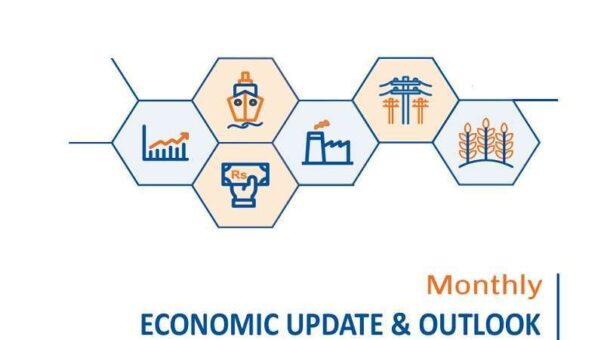Islamabad, November 28, 2025 – Pakistan’s economic outlook remains cautiously optimistic as key macroeconomic indicators continue to stabilize under ongoing structural reforms, the finance ministry said in its Monthly Economic Report for November 2025.
The ministry noted that industrial activity is strengthening, supported by improved input availability, digital transition, and governance reforms. However, inflation is projected to remain elevated in the range of 5.0–6.0 percent in November due to persistent pressure on food prices and mixed agricultural performance.
According to the report, adequate supplies and government support measures are expected to help maintain stability during the Rabi season. The current account deficit also remains within the anticipated range, backed by steady export growth and robust remittance inflows, despite rising import demand linked to higher production needs.
The ministry highlighted that Pakistan’s economy is progressing on a path of gradual stabilization, with early gains emerging from structural reforms. Fiscal discipline remains intact as stronger revenue mobilization and prudent expenditure management help keep finances on track. Public debt dropped by Rs. 1,371 billion, marking the first quarterly decline in over five years, due to the strategic early retirement of expensive debt.
Agriculture performance remained mixed, with increases in sugarcane, mung, and chillies output, while cotton, rice, and maize recorded declines. Agricultural credit disbursement surged by 18.6 percent to Rs. 845.3 billion during Jul–Oct FY2026.
Large-Scale Manufacturing also showed recovery, growing 4.1 percent during Jul–Sep FY2026, with strong contributions from textiles, apparel, petroleum products, automobiles, and food sectors. Cement dispatches rose 15.5 percent, while auto production posted double-digit growth.
Inflation in October rose to 6.2 percent YoY, driven by increases in education, health, clothing, transport, and food costs. Price trends for essential commodities remained mixed, as shown by the Sensitive Price Indicator, which increased 0.73 percent for the week ending November 27.
Fiscal consolidation efforts yielded a federal surplus of Rs. 1,338.2 billion during Jul–Sep FY2026, while the primary surplus improved to Rs. 3,497.3 billion. FBR collections rose 11.4 percent to Rs. 3,834.9 billion in the first four months of FY2026.
The external sector reported increasing trade activity, with goods exports rising 2.0 percent and services exports up 15.9 percent. Remittances grew 9.3 percent to $13.0 billion, led by inflows from Saudi Arabia and the UAE. However, the current account deficit widened to $733 million due to higher imports. Foreign exchange reserves stood at $19.7 billion on November 14.
Monetary indicators showed steady performance as the policy rate remained unchanged at 11 percent. Money supply contracted slightly, and PSX recorded a bearish trend in October, with the KSE-100 Index falling by 3,862 points.
On the social front, overseas worker registrations surged 22.8 percent in October to 90,339, while interest-free loan disbursements and welfare spending under BISP posted significant growth.
Overall, the finance ministry expects Pakistan’s economic momentum to continue, supported by reforms, fiscal discipline, and improving industrial performance, despite challenges from inflation and volatile global conditions.
